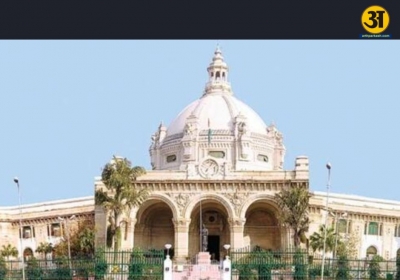.png)
The 'desi gulab,' which is bright pink and fragrant, is best for creating attar.
Kannauj's efforts to keep a long-standing aromatic heritage alive.
What does the scent of rain-soaked lush soil have to do with an enterprising queen going about her business? Both contributed to the creation of a distinct occupation and identity for a historic city in Uttar Pradesh.
And the reasons this city, Kannauj, is in the news right now encapsulate Uttar Pradesh's story: muscular politics drowning out other aspects of an aesthete state that once turned the good life into good business – be it the elegant cuisine of Awadh, the exquisite chikan embroidery of Lucknow, or the ethereal fragrance industry of Kannauj.
Kannuaj, six hours north of New Delhi, appears to be another archetypal North Indian tiny town fetishized by OTT shows — dusty roads, stuttering e-rickshaws, calm bovines, coaching class hoardings. However, if you know what to look for, you can uncover clues to its olfactory past: An itra karkhana (attar) is announced by a colorful arched gate.
For generations, Kannauj has been distilling itra, or attar, by persuading roses, jasmines, and other flowers into giving up their aroma and quickly bottling it with essential oils. But the village is best known for being able to bottle petrichor, the smell of rain on the earth, which they refer to as mitti ka attar, or soil aroma. There are no diluted notes in the attar created here. The aroma is heavier but quieter than alcohol-based fragrances, and it lasts longer.
The extraction process for Fragnaces
The community still extracts fragrances the old-fashioned way, without the use of power or heavy machinery. The perfume industry in Kannauj is now worth over Rs 1,200 crore, and it employs approximately 80% of the city's population of over 10 lakh people directly or indirectly.
Aside from the larger companies, ask anyone in Kannauj and they will point you to houses that use the traditional 'deg bhapka' method of scent extraction. The majority of fragrance merchants will tell you that they have been in the industry for centuries.
What is the history of the fragrance industry in Kannauj?
Kannauj was a great city in ancient India that rose to prominence as King Harshavardhana's capital in the seventh century, only to be devastated multiple times after that. According to accounts in the Vedas, the Kamasutra, and the Charak Samhita, fragrances and perfumes have been popular in India for generations. Perfumes are included in the 'solah shringar' (16 adornments).
Kannauj is thought to have been producing scents since the Gupta era, thanks to its fertile alluvial soil, which is ideal for cultivating flowers, and allusions to it can be found in Banabhatta's Harshacharita. The deg bhapka method, on the other hand, is similar to the distillation method that developed later in the Arab world.
The Mughals boosted the fragrance business in Kannauj, particularly under queen Noor Jahan, who was an avid and imaginative user of scents herself.
According to legend, Noor Jahan's mother, Asmat Begum, or, in some versions, a Kannauj-based staff member, noticed rose petals leaving an oily residue overheated bathwater and recognized the oil could be collected. In fact, it is reported that emperor Jahangir wrote about his mother-in-law extracting rose attar.
"Fragrance-making was clearly known in India from ancient times," says Ali Nadeem Razavi, author and history professor at Aligarh Muslim University. Arabs developed distillation in the 10th and 11th centuries and brought it to India. While the step-by-step journey of the distillation method to Kannauj is difficult to trace, the fragrance industry received focused royal patronage under the Mughals, particularly Akbar and Jahangir (their reigns together spanning from 1556 to 1627), allowing it to equip itself with the latest methods."
"But that does not necessarily indicate that was the first time it was done," Rezavi argues of Jahangir's claim that he saw Asmat Begum extract rose attar.
Historian William Dalrymple has written on how India established a complex scent industry by combining ancient traditions with Arabian and Persian innovations, using documents from the Ni'matnama, or Book of Delights, authored by the King of Malwa Ghiyath Shahi in the late 1400s.
Is there any evidence that this patronage has continued under recent administrations? While schemes have been planned, "not much can be seen on the ground," according to Samvedi, "but of course, Covid would have derailed plans."
The fragrance sector is formally linked to Kannauj thanks to a Geographical Indication designation issued by the Centre in 2014. However, according to Samedi, the industry is much more. "Our ingredients are utilized to make agarbattis, which are used to enhance the flavors of meals, and the attar is Sunnat in Islam." Moreover, unlike synthetic perfumes with strong aromas that others can inhale, attar's calmer fragrance is for oneself - to encourage mental calmness and wellness. is about presenting your soul and god with a fragrant body. Our bottles, in this way, encapsulate the scent and character of India."





